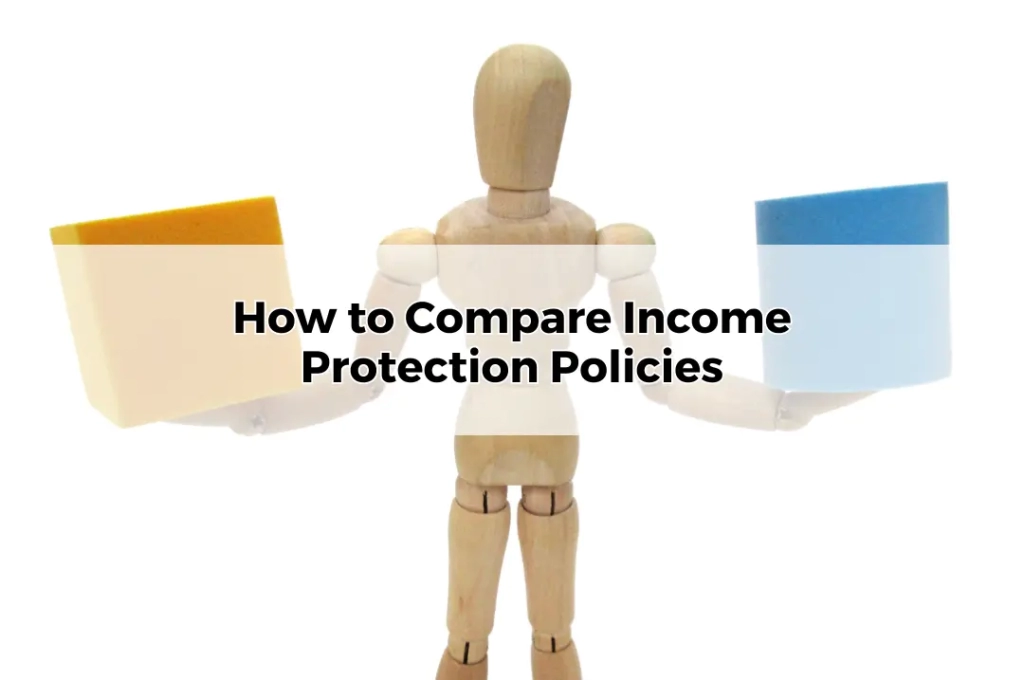How to Compare Income Protection Policies
Table of Contents
ToggleIncome protection insurance is an essential safeguard for maintaining financial stability during periods of illness or injury when you are unable to work. It provides a percentage of your income as a benefit, ensuring you can continue to meet your financial obligations while recovering. For individuals who rely on a steady income, particularly in a single-income household or self-employed professionals, income protection can be a lifeline.
Choosing the right income protection policy requires more than simply selecting the first option that appears suitable. Each policy varies in terms of coverage, exclusions, and cost. By comparing the key features of different policies, you can tailor your coverage to suit your financial situation, ensuring comprehensive protection without overpaying.
Understanding the Basics of Income Protection Insurance
Income protection insurance is designed to cover a portion of your income if you’re unable to work due to sickness or injury. Typically, this insurance will replace up to 75% of your regular income, providing you with financial support until you’re fit to return to work. It’s especially useful for professionals who have limited sick leave or rely on their income to meet financial commitments such as mortgages, loans, or family expenses.
While everyone can benefit from income protection, it is particularly relevant for those in high-risk occupations, sole traders, and those who do not have significant savings to fall back on. Understanding how income protection works helps ensure that you are adequately covered, providing peace of mind in the face of unexpected challenges.
Policy Premiums
One of the most significant considerations when comparing income protection policies is the cost of premiums. Premiums are determined by various factors, including your age, occupation, health, and smoking status. For instance, individuals in high-risk jobs such as construction may pay higher premiums compared to those in low-risk office roles.
Additionally, the length of the benefit period, the waiting period, and the level of income coverage all impact the cost. While it may be tempting to opt for a lower premium, it’s important to balance affordability with adequate coverage. You don’t want to sacrifice essential benefits just to reduce costs. Carefully assess what is included in the premium to ensure you get the protection you need.
Benefit Amount
The benefit amount refers to the percentage of your income that will be covered by the insurance policy. Most policies cover up to 75% of your regular income, but the exact amount can vary. When comparing policies, it’s crucial to determine how much income you need to cover essential expenses such as housing, utilities, food, and loan repayments.
Consider your overall financial situation, including any existing savings or other sources of income, when determining the right level of cover. While it’s common to insure 75% of your income, those with higher financial commitments may choose a policy that offers the maximum benefit allowed to ensure they can maintain their lifestyle during recovery.
Benefit Period
The benefit period is the length of time for which the insurance company will pay out benefits if you’re unable to work. This can range from two years to coverage until retirement age. Short-term policies may be more affordable but provide less security if your illness or injury lasts longer than expected. Long-term policies, while more expensive, offer extended financial protection and are better suited for individuals with higher financial commitments or those in uncertain job environments.
Choosing the right benefit period is a crucial decision that should align with your personal and professional situation. For those early in their careers, a long-term policy may offer the best protection, whereas individuals nearing retirement may prefer short-term coverage.
Waiting Period
The waiting period is the amount of time you need to wait after becoming unable to work before your income protection payments start. Waiting periods can range from 14 days to several months. Generally, the longer the waiting period, the lower the premiums. However, choosing a waiting period that’s too long may leave you without income when you need it most.
When comparing policies, assess your ability to cover expenses during the waiting period. For individuals with limited savings or no employer-provided sick leave, a shorter waiting period may be more appropriate, even if it results in higher premiums.
Level of Income Replacement
Income protection policies typically offer coverage for a percentage of your income, ranging from 50% to 75%. The choice between partial or full protection depends on your financial needs and risk tolerance. A policy that covers 75% of your income provides more security, ensuring you can meet most of your regular expenses. However, policies that cover a lower percentage of income can be more affordable, reducing premium costs while still providing some financial support.
It’s essential to balance affordability with the coverage required to maintain your standard of living during periods of income loss. Opt for a level of income replacement that ensures your financial well-being without overstretching your budget.
Policy Exclusions
When comparing income protection policies, it’s crucial to review the exclusions—circumstances under which the insurer will not pay out benefits. Common exclusions include pre-existing conditions, self-inflicted injuries, or disabilities resulting from high-risk activities. It’s important to be fully aware of what’s not covered to avoid unpleasant surprises when you make a claim.
Always read the fine print of the policy to ensure that the coverage suits your lifestyle and health status. Understanding exclusions is key to selecting a policy that genuinely protects you in the most likely scenarios where you’d need support.
Agreed Value vs Indemnity Value Policies
When selecting an income protection policy, you will need to choose between agreed value and indemnity value policies. Agreed value policies lock in a set benefit amount at the time of application, which can provide certainty, especially for self-employed individuals with fluctuating incomes. Indemnity value policies, on the other hand, calculate the benefit amount based on your income at the time of the claim.
While indemnity value policies are generally cheaper, they may result in lower payouts if your income has decreased before claiming. Agreed value policies offer more security but come with higher premiums. Understanding the difference between these options is crucial to making an informed choice that aligns with your financial situation. Agreed value policies are not available since 2021 and consideration to retaining existing policies should be given priority.
Tax Implications of Income Protection Insurance
In Australia, premiums paid for income protection insurance are tax-deductible, making this type of coverage more affordable. However, it’s essential to understand that the benefits you receive from an income protection policy are typically taxed as regular income. This means you need to factor in the after-tax amount you’ll receive when calculating your coverage needs.
When comparing policies, consider how tax treatment affects both premiums and payouts. A financial adviser can help you navigate these tax considerations, ensuring that your income protection policy maximises your financial security while minimising tax liabilities.
Income Protection for Self-Employed Individuals
For self-employed professionals, income protection insurance is often even more critical. Without the safety net of employer-provided sick leave or workers’ compensation, self-employed individuals rely solely on their own income. Tailoring an income protection policy to suit your business structure and fluctuating income is essential.
Policies designed for the self-employed often offer more flexible coverage options, such as shorter waiting periods and higher benefit percentages. When comparing policies, self-employed individuals should pay particular attention to exclusions, waiting periods, and whether the policy offers sufficient protection for their unique financial circumstances.
Conclusion
Choosing the right income protection policy requires a detailed understanding of your financial situation, lifestyle, and future plans. Consulting with a Toowoomba Financial Adviser can help you navigate the complexities of comparing policies, ensuring you choose the most appropriate cover for your needs. A professional adviser can assess your financial obligations, risk tolerance, and long-term goals to tailor a policy that offers the best protection without unnecessary costs.
At Wealth Factory, we specialise in income protection strategies that safeguard your financial well-being while optimising your insurance choices. Whether you’re self-employed or employed, seeking professional advice ensures that your policy aligns with your overall financial plan, providing peace of mind and financial security during uncertain times.









